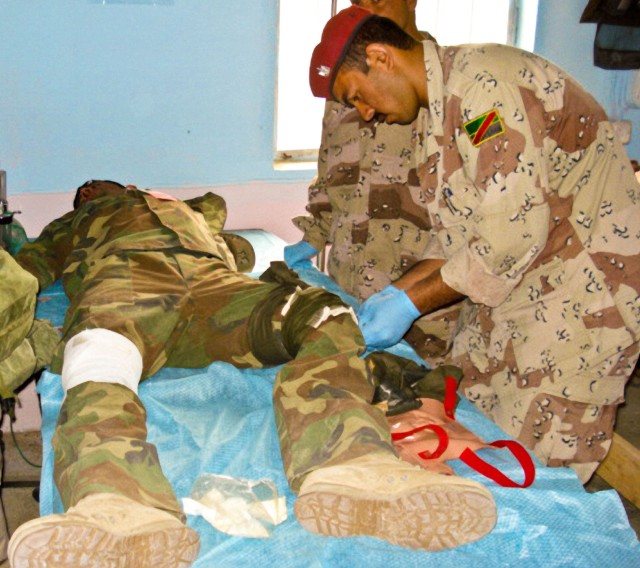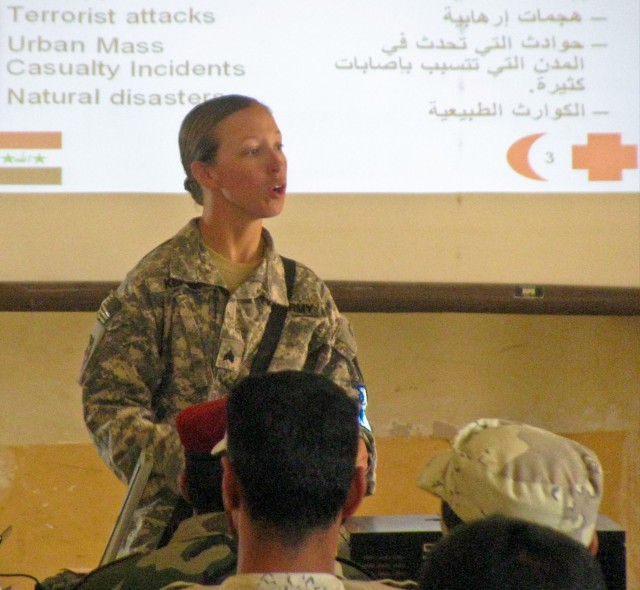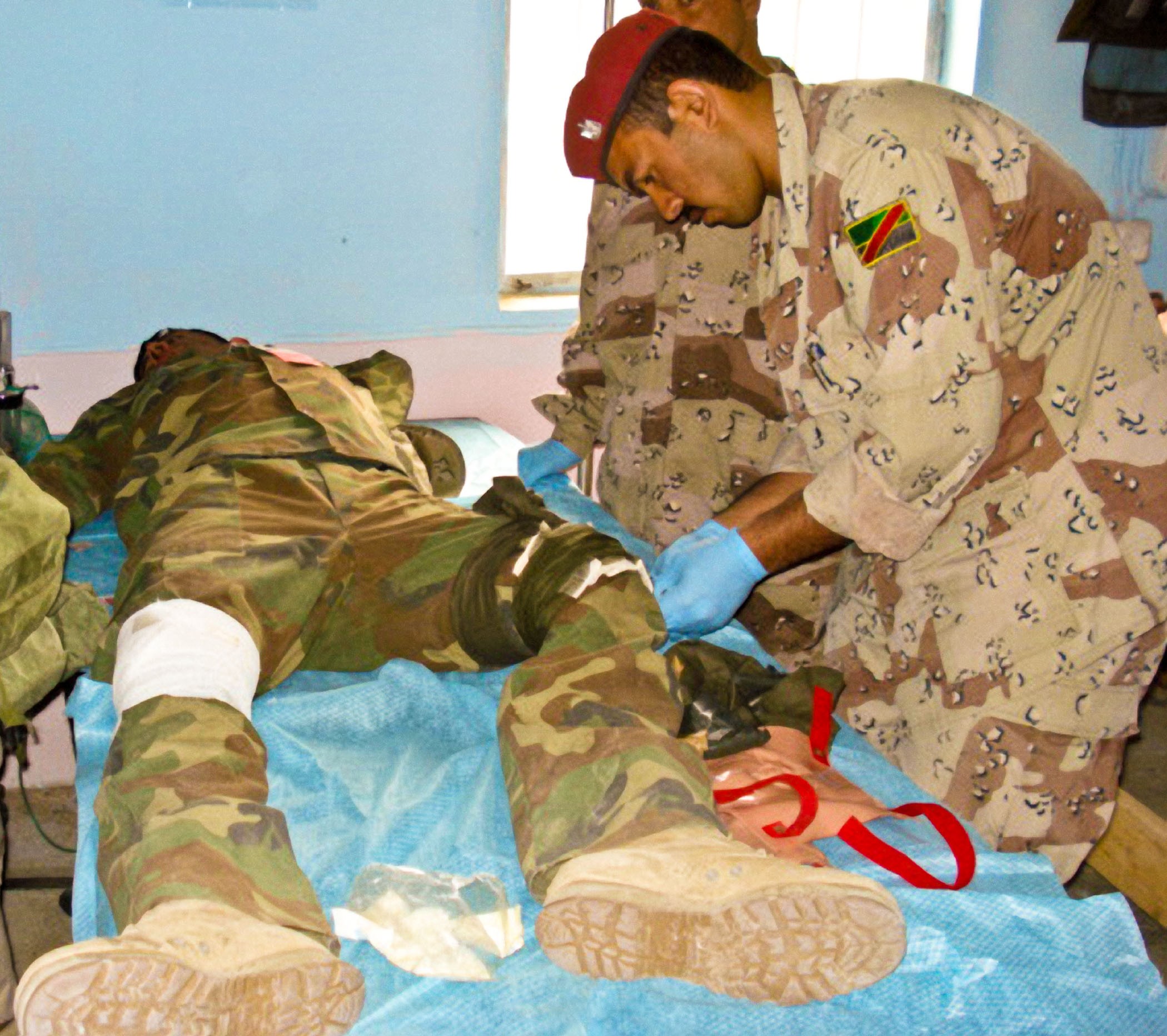CAMP WHITE HORSE, Iraq - As the alarm pierced the smoke-filled air, Iraqi Army soldiers instinctively ran to their positions. The Medics and Combat Life Savers, assigned to the 10th Motor Transportation Regiment,10th Iraqi Army Division, hurried to gather their equipment during the first ever massive casualty exercise here recently.
"This is an outstanding training opportunity for the Iraqi Soldiers," said Sgt. Crystal Kepler, a combat medic assigned to the 27th Brigade Support Battalion, 4th Brigade Combat Team, 1st Cavalry Division and native of Glendale, Calif. "This is mainly because they have never been exposed to it. They have seen triage and MASCAL only in theory."
The town's bakery was on fire after a series of explosions, while the Iraqi medics responded to cries for help from injured civilians and fellow Soldiers.
This simulated chaos was designed to test the Iraqi medics' ability to deliver health care as they put their months of combat casualty training into action.
"It has been a couple of stressful weeks preparing the plan, briefing the commanders," said Lt. Ahmed, the regiment's field surgeon and a native of Nasiriyah. "We have placed a lot of effort into this MASCAL."
The combat medics from Company C., 27th BSB evaluated the Iraqis during the exercise.
While the medical personnel rushed to treat the simulated casualties, others were preparing to receive the patients at pre-designated places in accordance with the unit's emergency medical plan.
As the casualties were categorized by the severity of injuries, the litter bearers loaded them onto an evacuation vehicle to be transported to the nearest medical facility.
"It has opened our eyes to what can happen, but not necessarily in a combat situation," Ahmed concluded. "We need to be prepared for those possibilities."




Social Sharing